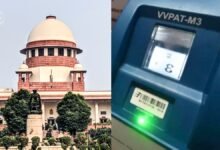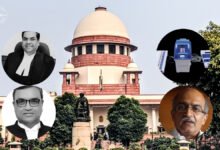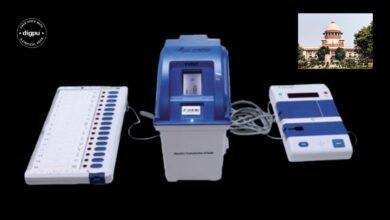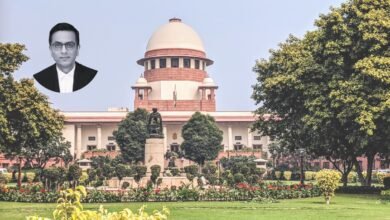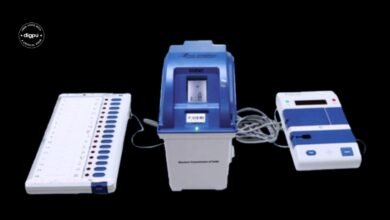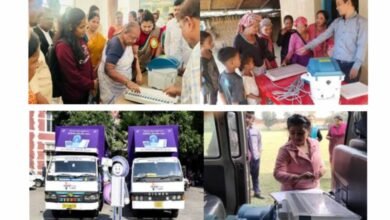Supreme Court Rejects Pleas for 100% Cross-Verification of EVMs with VVPATs
Supreme Court Rejects Pleas for Full EVM-VVPAT Cross-Verification, Issues Key Directives Amidst Lok Sabha Elections 2024.
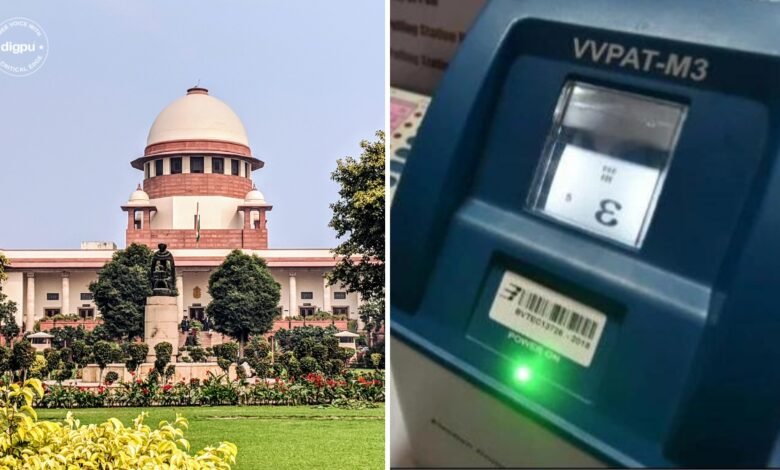
New Delhi, 26 April 2024: In a crucial decision, the Supreme Court of India, on Friday, dismissed petitions advocating for the full cross-verification of Electronic Voting Machines (EVMs) data with Voter Verifiable Paper Audit Trail (VVPAT) records. The verdict, delivered by a bench comprising Justices Sanjiv Khanna and Dipankar Datta, marks a significant point in the ongoing debate surrounding electoral transparency and the integrity of India’s democratic process.
The cases, initially reserved for orders on April 18, were revisited on April 24, as the bench sought additional technical clarifications from the Election Commission (EC). Following thorough deliberation and consideration of the responses provided by the EC, the court pronounced its decision on April 26.
It’s noteworthy that both Justice Khanna and Justice Datta authored separate yet concurring judgments on the matter. Justice Khanna, in his remarks during the court session, highlighted the rejection of pleas advocating for a return to ballot paper voting, complete EVM-VVPAT verification, and the distribution of VVPAT slips to voters for depositing in the ballot box. He emphasized that these pleas were dismissed after careful examination of existing protocols, technical aspects, and available data.
Despite the rejection of the aforementioned pleas, the Supreme Court issued two significant directives:
- Sealing of Symbol Loading Units (SLUs): Following the symbol loading process in the VVPATs, the SLUs are to be sealed and secured in containers. Candidates or their representatives will endorse the seals, and these sealed containers will be stored alongside EVMs in strong rooms for a minimum of 45 days post-results declaration.
- Verification of Burnt Memory Semi-Controllers: A team of engineers from EVM manufacturers will verify the burnt memory semi-controllers in 5% of the EVMs per assembly segment of each Parliamentary constituency. This verification will occur upon a written request from candidates ranking second and third behind the highest polled candidate. Candidates or their representatives can identify the EVMs for verification, with the process overseen by the District Election Officer. The expenses for this verification will be borne by the requesting candidates, subject to reimbursement if tampering is detected.
Furthermore, Justice Khanna urged the EC to explore the feasibility of an electronic machine for counting VVPAT paper slips and suggested the inclusion of barcodes for each political party alongside symbols. Justice Datta, in his supplementary remarks, cautioned against blind distrust of the electoral system, advocating instead for a critical yet constructive approach rooted in evidence and reason to uphold the system’s credibility and effectiveness.
The timing of the judgment coincides with the commencement of phase 2 of the Lok Sabha Elections 2024, adding additional significance to the ruling.
The petitions challenging the prevailing procedure were filed by the NGO Association for Democratic Reforms, along with individuals Abhay Bhakchand Chhajed and Arun Kumar Aggarwal. They argued for comprehensive VVPAT verification to ensure that every vote is ‘recorded as cast’ and ‘counted as recorded’.
The EC countered these arguments, dismissing them as attempts to sow doubt on the functioning of EVMs and VVPATs based on vague and unsubstantiated claims. The EC further contended that manual verification of all VVPAT paper slips would be laborious, time-consuming, and susceptible to human error and manipulation. It also asserted the tamper-proof nature of EVMs, rejecting the notion of voters having a fundamental right to the extent claimed by the petitioners.
The Supreme Court’s decision, while addressing concerns raised by petitioners, underscores the delicate balance between electoral transparency and practicality in the world’s largest democracy.
